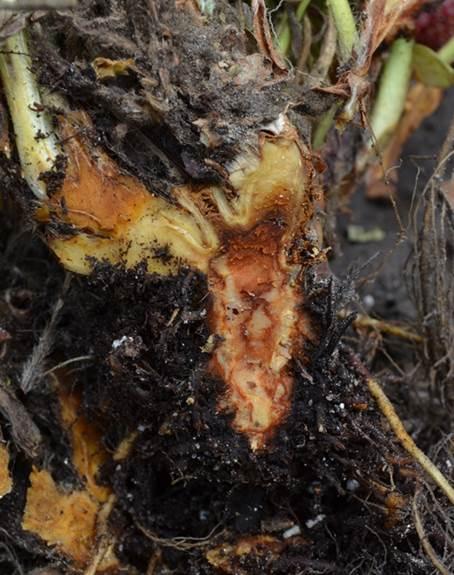By Clint Thompson
Disease diagnosis is better left to the experts.
North Carolina strawberry producers who are concerned their crop is infected with crown rots should be wary about diagnosing the disease themselves. Different diseases require specific chemical treatments, says Bill Cline, North Carolina (N.C.) State Extension specialist in small fruits production.

Frank J. Louws
Concerned growers should submit their samples to the Plant Disease and Insect Clinic at N.C. State.
“There’s different treatments for different crown rots, and the two major crown rots we see are anthracnose crown rot and phytophthora. They both cause discoloration in the crown of the strawberry plant. The symptoms do look a bit different in the crown, but you really can’t rely on that field diagnosis,” Cline said. “Even myself when I collect samples from a grower site and I think I know what it is, I still send it to our clinic at N.C. State and get a positive identification.
“Anthracnose crown rot in the fall of the year, you can rogue it out. You know you can use foliar fungicides on the remaining plants, but that’s about all you can do. If you have, in contrast, phytophthora crown rot, that’s a different type of organism. It’s a water mold. It’s water borne. The spores are swimming spores that can move in the spaces in between the soil particles. It can spread plant to plant, and it’s one you manage with very different products.”
Management Options Before Planting

North Carolina strawberries are in the ground following a delayed planting season. Prior to future planting seasons, though, growers can use disease-free plants and resistant cultivars to manage anthracnose as well as use a plant dip with a combination of Cyprodinil and Fludioxonil or just Zivion. To manage phytophthora, growers should use disease-free plants, avoid using a field that is prone to standing water and poorly drained soils and use Mefenoxam and Metalaxyl in the fall and spring.
But as for this season, correct diagnosis is vital to sustained success.
“You don’t want to be treating for something that’s misdiagnosed, because you’re just wasting your money. If you’re reacting to anthracnose crown rot and you’ve got phytophthora crown rot, you’re not going to achieve anything by treating with the wrong product,” Cline said.









